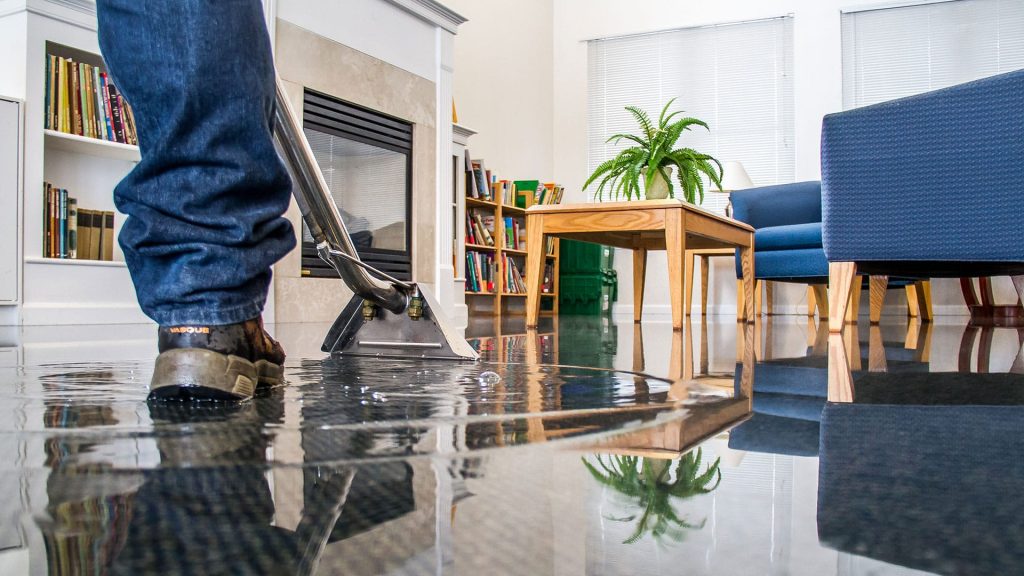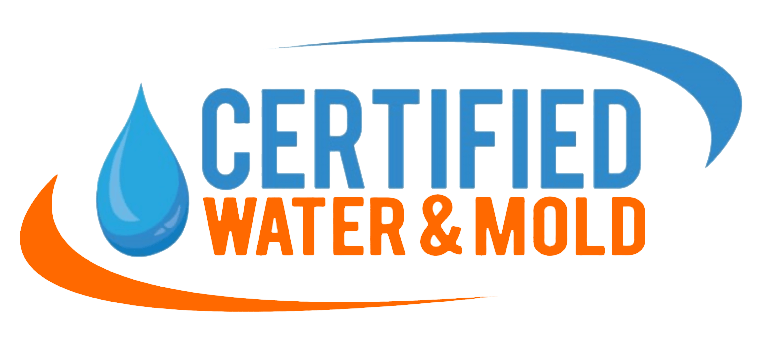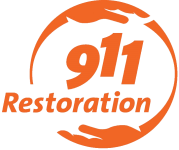Certified Water & Mold Restoration, LLC

CONTACT US
- 2021 B East Spruce Circle Olathe, KS 66062.
- 816-835-4959
- mike@cwmrestoration.com
BUISNESS LISTINGS
Here are some frequently asked questions about water damage cleanup in Olathe & Overland Park.
Water Damage Cleanup in Olathe & Overland Park– FAQ
Discover expert Water Damage Cleanup in Olathe and Overland Park with our comprehensive FAQ guide. Get insights on prevention, restoration, and more in just a click! It’s not a walk in the park to deal with water damage. Not to mention the cost that comes with it if it is not mitigated immediately. Have you ever been ankle-deep in unexpected problems after a leak or flood? You are not alone.
This common and unfortunate event can inevitably happen to homeowners and business owners. However, fear not because we’re here to piece together the answers and strategies for effective water damage cleanup in the heart of Olath and Overland Park.
Whether caused by burst pipes, leaking roofs, or appliance malfunctions, water damage––if not addressed promptly–– can lead to:
- structural problems
- mold growth,
- and other health hazards
Furthermore, this guide will answer the frequently asked questions about water damage cleanup in Olathe and Overland Park to help you understand the importance of addressing this issue and the steps involved in restoring your property. So, let’s dive in and learn everything you need to know!
- What are the common causes of water damage?
Here are some of the most common causes of water damage:
- Leaking or broken pipes: This is a major cause of water damage, especially in older homes. Pipes can burst due to freezing temperatures, corrosion, or loose connections.
- Clogged drains: Drains can become clogged with hair, soap scum, grease, and other debris. This can lead to backups and overflows, causing water damage to floors, walls, and ceilings.
- Appliance malfunctions: Dishwashers, washing machines, water heaters, and refrigerators can all leak or malfunction, leading to water damage.
- Natural disasters: Heavy rain, flooding, hurricanes, and other natural disasters can cause water damage to your home.
- Roof leaks: Damaged or clogged roofs can allow water to leak into your home, causing damage to ceilings, walls, and insulation.
- HVAC systems: Condensation from air conditioners and leaks in refrigerant lines can cause water damage.
- Sewage backup: A sewer line backup can cause a serious flood of contaminated water in your home.
- What are the signs of water damage in my home?
Water damage can present itself in various ways, some more obvious than others. Here are some key signs to watch out for:
Visual signs:
- Discoloration: Stains or water marks on ceilings, walls, or floors can indicate water damage. The color of the stain may provide clues about the source of the water. For instance, rusty stains could be caused by leaking iron pipes.
- Cracks: Cracks in walls, ceilings, or foundation can be caused by water damage as the excess moisture weakens these structures.
- Peeling paint or wallpaper: Moisture can cause peeling or bubbling of paint and wallpaper.
- Warping or buckling: Water damage can cause floors, walls, and ceilings to warp or buckle.
Touch and smell:
- Soft spots: If walls or floors feel soft or spongy to the touch, it could be a sign of water damage that has caused the materials to deteriorate.
- Musty odors: A musty or moldy smell is a strong indicator of water damage and potential mold growth. Mold thrives in damp environments and can pose health risks.
Other signs:
- Visible mold growth: Mold is a fungus that grows in damp areas and can appear in various colors, such as black, green, or brown.
- Sudden increase in water bill: An unexpected rise in your water bill might indicate a hidden leak somewhere in your plumbing system.
- The sound of running water: If you hear the sound of running water when no taps are turned on, it could be a sign of a leak.
If you notice any of these signs, it’s important to address the issue promptly. Early detection and intervention can help minimize the damage and prevent the growth of mold. It’s recommended to contact a professional plumber or water damage restoration company in Olathe KS to assess the situation and recommend the best course of action.
- What can I do to prevent water damage in my home?
Here are some steps you can take to prevent water damage in your home:
- Maintain your plumbing system: Regularly inspect your pipes and hoses for leaks or signs of wear and tear. Tighten loose connections and replace any damaged pipes or hoses immediately.
- Insulate exposed pipes: Insulating pipes in unheated areas of your home, like crawlspaces and attics, can help prevent them from freezing and bursting in cold weather.
- Address clogged drains: Prevent clogs by avoiding pouring grease, oil, or food scraps down the drain. You can also use a drain snake or cleaning product periodically to remove any buildup.
- Maintain your appliances: Regularly check your washing machine, dishwasher, refrigerator, and other water-using appliances for leaks. Pay attention to hoses and connections and replace them if necessary.
- Install washing machine leak pans: Washing machine leaks are a common household problem. Placing a leak pan under your washing machine can help catch any leaks and prevent water damage to your floor.
- Monitor your water pressure: High water pressure can put stress on your pipes and increase the risk of leaks. You can install a pressure regulator to maintain a safe water pressure level in your home.
- Inspect your roof and gutters regularly: Clean your gutters regularly to prevent them from becoming clogged with leaves and debris. A clogged gutter can cause water to back up and leak under your roof. Also, have your roof inspected for damaged or missing shingles that could allow water infiltration.
- Direct water away from your foundation: Ensure the ground slopes away from your house to direct rainwater away from the foundation. This will help prevent water from seeping into your basement or crawlspace.
- Turn off the water supply if you’re going away on vacation: If you’ll be away from home for an extended period, consider turning off the water supply to your house. This can help prevent leaks from occurring while you’re gone.
- Install water leak detectors: Consider installing water leak detectors in areas prone to water damage, such as near washing machines, dishwashers, and under sinks. These devices can alert you to leaks early on, so you can take action to minimize the damage.
- What proactive steps should you take to prevent mold growth in a water-damaged home
Act Quickly: Mold thrives in damp environments, so speed is crucial. Ideally, you should address water damage and begin drying efforts within 48 hours to prevent mold spores from germinating.
Contain the Source of Water: The first step is to stop the source of the water damage. This might involve turning off the water supply, repairing a leaky pipe, or fixing a roof leak.
Promote Drying and Ventilation:
- Increase Airflow: Open windows and doors whenever possible to promote natural ventilation and air circulation.
- Dehumidify the Area: Use dehumidifiers to remove excess moisture from the air. Aim for a humidity level below 60% to discourage mold growth.
- Fans and Air Movers: Use fans and air movers to accelerate the drying process in affected areas.
Remove Standing Water:
- Wet Carpet and Upholstery: Remove and discard any wet carpets, rugs, or upholstery that cannot be thoroughly dried and cleaned.
- Hard Surfaces: Thoroughly mop up any standing water on hard surfaces like floors and walls.
Clean and Disinfect Affected Areas:
- Cleaning Solution: Once the area is dry, clean and disinfect affected surfaces with a solution of one part bleach to ten parts water. Wear gloves and proper ventilation while using bleach.
- Porous Materials: For porous materials like drywall that may be salvageable, cleaning and disinfecting might be sufficient. However, extensively mold-colonized porous materials should be removed and replaced.
Monitor the Situation: Continue monitoring the affected area for signs of mold growth, even after drying and cleaning. If you suspect mold growth, it’s best to consult a professional mold remediation company for proper assessment and treatment.
Consider Professional Help: For extensive water damage or if you suspect mold growth beyond your ability to handle, it’s recommended to seek professional help from a mold remediation company. They have the expertise and equipment to safely and effectively remove mold and restore your home to a healthy condition.
- How can I find a reputable water damage restoration company?
Here are some steps to help you find a reputable water damage restoration company:
Urgency vs. Research:
- Emergency Situations: If your water damage situation is urgent and requires immediate attention, prioritize stopping the water source and ensuring the safety of your home. You can still research companies while remediation begins, but focus on qualified companies that offer 24/7 emergency services.
Ask for Recommendations:
- Friends, Family, and Neighbors: Talk to friends, family, and neighbors who may have used water damage restoration services in the past. Get their recommendations and insights into their experiences.
- Local Contractors and Realtors: Local contractors and realtors often work with restoration companies and might have recommendations for reputable ones in your area.
Online Research:
- Review Websites: Search online for water damage restoration companies in your area. Check their websites to understand the services they offer, their experience level, and their certifications.
- Customer Reviews: Read online reviews on platforms like Google My Business, Yelp, and the Better Business Bureau (BBB) to see what past customers have to say about the company’s service quality, professionalism, and responsiveness.
Contact and Compare:
- Get Quotes: Contact several shortlisted companies and request quotes for the water damage restoration work. This will help you compare pricing and services offered.
- Ask Questions: Don’t hesitate to ask questions about the company’s experience with similar water damage situations, their insurance requirements, and their licensing and certifications.
Key Points to Consider:
- Licensing and Insurance: Ensure the company is licensed and insured in your state. This protects you in case of any accidents or issues during the restoration process.
- Certifications: Look for companies with certifications from industry organizations like the Institute of Inspection, Cleaning and Restoration Certification (IICRC). This indicates their technicians have met industry standards for water damage restoration.
- Experience: Ask about the company’s experience handling water damage situations similar to yours.
- Communication: Choose a company that prioritizes clear communication and keeps you informed throughout the restoration process.
- Transparency: Ensure the company provides a detailed breakdown of the restoration process, the expected timeline, and the associated costs before starting work.
By following these steps and considering the key points mentioned, you can increase your chances of finding a reputable and qualified water damage restoration company to address your needs.







